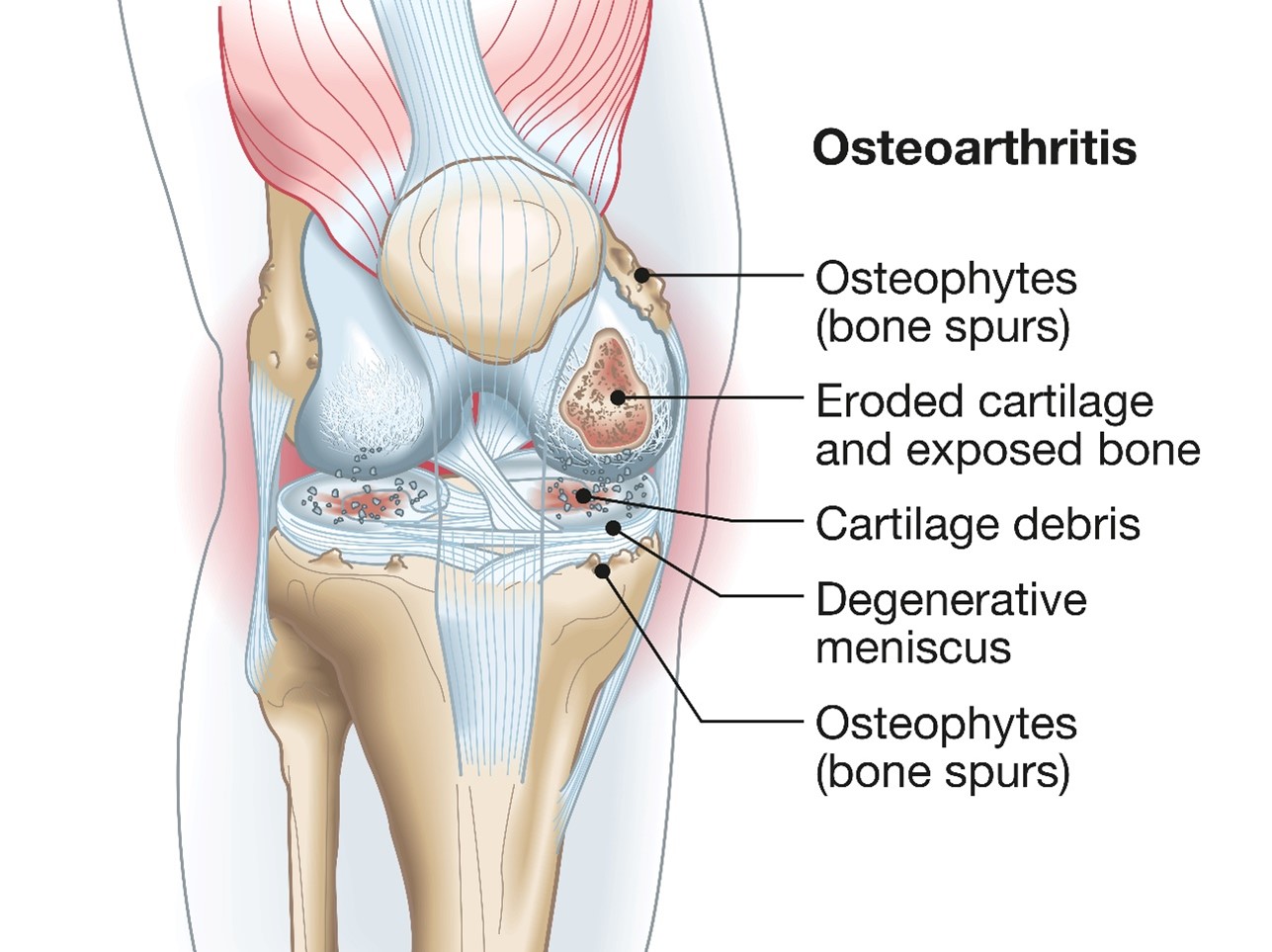Could You Have Osteoarthritis?
Osteoarthritis affects millions and is responsible for debilitating, non-stop pain. It can have huge negative impact on mobility and quality of life and is responsible for 95% of knee and hip replacement surgery.
If you are already suffering osteoarthritis pain and want treatment to reduce the pain and improve your mobility, or feel you need a diagnosis now and want to learn ways to reduce the impact of osteoarthritis, then read on.

Osteoarthritis (OA), which the most common type of arthritis, is wear and tear in the smooth cartilage protecting the bones in joints. This eventually leads to bone erosion, bone spurs and unsightly bony end thickening. The joint juice (synovial fluid), swells and becomes inflamed and sticky. The attacked bone haemorrhages precious calcium. The result tends to be pain and stiffness, worsening as the severity increases.
Indicators of OA are painful joints and especially more pain and stiffness when you wake or start moving. By 50 years old 8 out of 10 of us have OA and by 60, 9 out of 10. Left untreated, OA can have a massive negative impact on your quality of life. Left untreated, it may need surgery. In fact, 95% of surgery on knees and hips is OA related. The amount of pain felt does not always match the amount of wear and tear
How Do You Find Out If You Have Osteoarthritis?
Provisional Diagnosis is by a taking a detailed history, your story and that of your close relatives, as OA so often runs in families. While this article is about OA, however, you may well have a combination of all sorts, for example, osteoporosis, rheumatoid and ligament strain. We explore how the severity of your muscle weakness, stiffness and joint pain affects your lifestyle. We ask you to partly undress and undergo functional movements to assess for joint range, flexibility, strength, pain and swelling and to allow the severity of the OA to be graded. Confirmation of the precise diagnosis and grading is only possible by adding X-ray or MRI scanning and bloods.
Could You Have Osteoarthritis Even Though You Don’t Hurt Much?
Perhaps surprisingly, the amount of pain felt does not always match the amount of wear and tear. Hence you need to be examined by experts. Cartilage itself has no pain receptors, so it can’t send a pain signal to the brain. Modern research also shows little correlation of wear and tear to pain severity. Hence pain alone cannot be used to determine the need for highly invasive joint surgery.
Pain signals are sent to a nociceptive part of the brain (the part which processes pain from tissue damage) and the pain starts shouting out, in a way that is a million times more distracting than your conscious thoughts. Moreover, after just 3 months the pain moves into the emotional centre and hardwires himself into your mood and previously innocuous lifestyle activities. What this means is that your brain memorises and associates the pain with an activity that should normally be enjoyable. The pain becomes chronic pain.
Can We Help You With Osteoarthritis and Chronic Pain?
The good news is mindfulness physiotherapy can massively reduce chronic pain. We advocate working towards optimum health with our 4 Keys approach. Nicky’s favourite treatment combination of modalities are:
- Wellness physiotherapy with a good exercise prescription and mindfulness
- dietary advice and supplementation
- acupuncture to give some immediate pain relief
- in less severe cases, shockwave for stiffness
If you are suffering long term pain and think it might be due to osteoarthritis, then it makes a lot of sense to call us to get you properly diagnosed and start treatment to reduce that pain and improve your mobility as quickly as possible.
CALL 01889 881488 NOW!
Jean, Erica or Charlotte will be happy to help.
